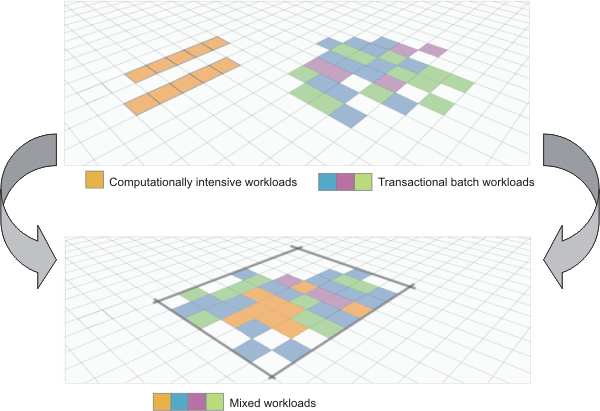Network Deployment (Distributed operating systems), v8.0 > Applications > Batch applications > Batch concepts
Batch overview
The Java EE applications that are typically hosted by WebSphere Application Server perform short, lightweight, transactional units of work. In most cases, an individual request can be completed with seconds of processor time and relatively little memory. Many applications, however, must complete batch work that is computational and resource intensive.
The batch function extends the application server to accommodate applications that must perform grid work alongside transactional applications, as shown in the following graphic. Grid work might take hours or even days to finish and uses large amounts of memory or processing power while it runs.

Batch support includes a Web-based application for managing jobs, called the job management console. Through this console, you can submit jobs, monitor job execution, perform operational actions against jobs, and view job logs.
Jobs express units of grid work. A job describes the work, which application must perform the work, and can include additional information to help WebSphere Application Server handle the work effectively and efficiently. Jobs are specified in an XML dialect called xJCL and can be submitted programmatically or through a command-line interface. As part of a job submission, the job is persisted in an external database and given to the job scheduler. The job scheduler distributes waiting jobs to available grid endpoints to run.
Related concepts
Transactional batch and compute-intensive batch programming models
xJCL elements
 Concept topic
Concept topic